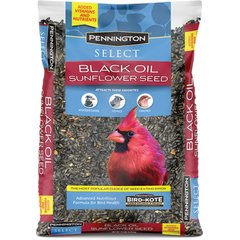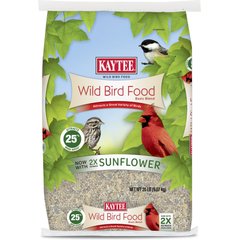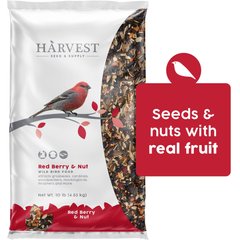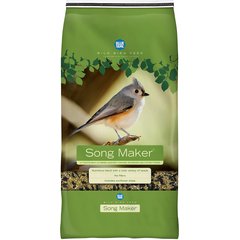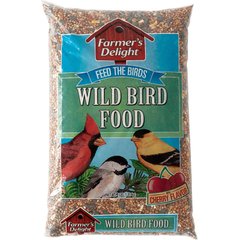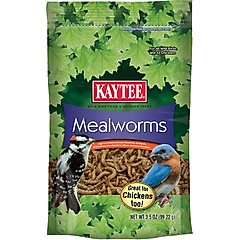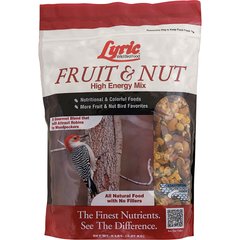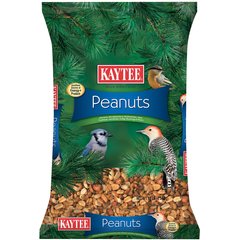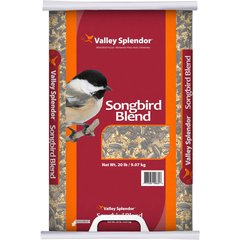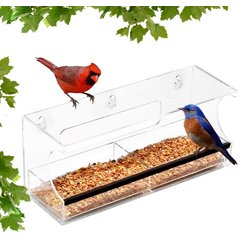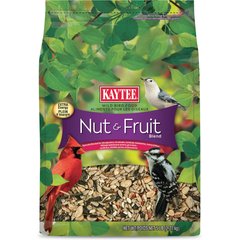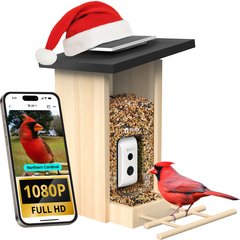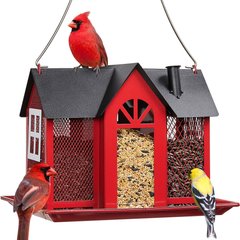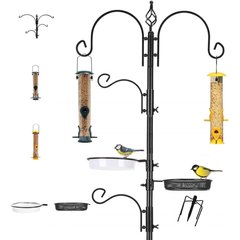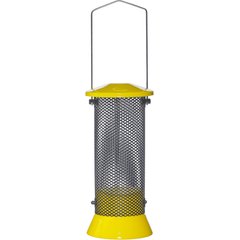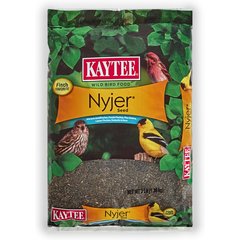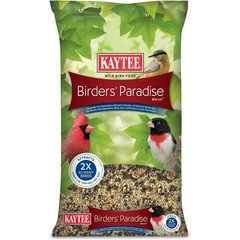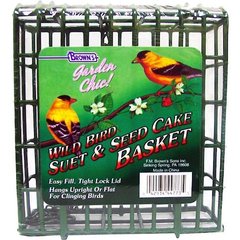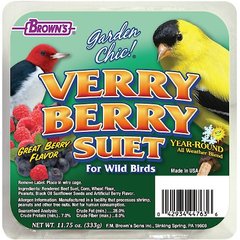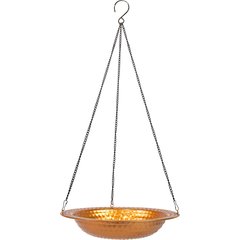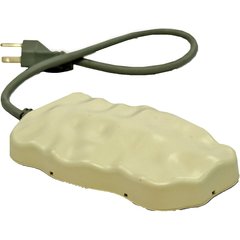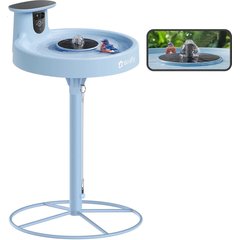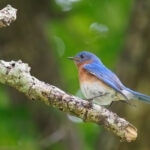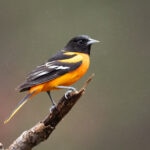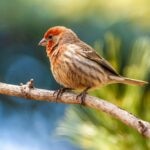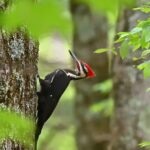7 Winter Birds To Spot This Season—And How To Attract Them To Your Yard
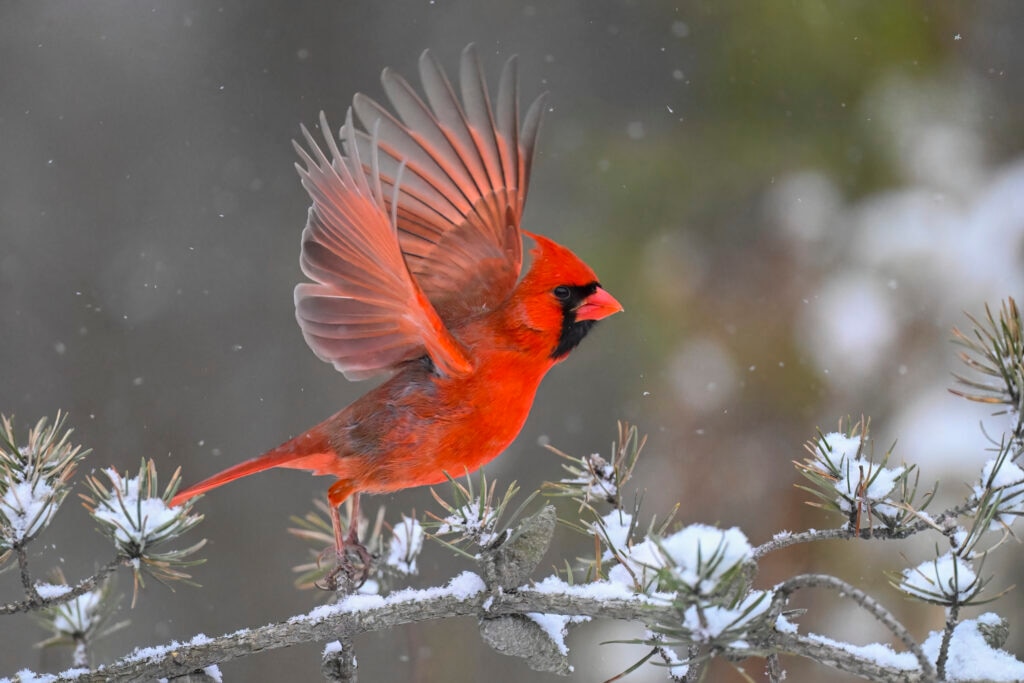
Photo by pchoui/E+
The arrival of winter brings cozy weather, shorter days, and a time for reflection on the year that was. For birders across the country, the season is also a time to take stock—not of one’s blessings and achievements, but of the winter birds outside their windows.
Brooke Bateman, the National Audubon Society’s senior director of climate and community science, oversees citizen science efforts including the Christmas Bird Count. Held mid-December to early January, the annual bird census is the longest-running citizen science project in the world. Its data has helped ornithologists track bird populations in the Western Hemisphere for more than a century.
“We have some people who have been doing it for over 50 years in their location,” says Bateman. “It’s such a wonderful program.”
The best part? Anyone can get involved—just head outside (or stay warm indoors and peek through your windows) to look for these common winter birds.
We’ve chosen species with distinct features for novice birders to spot, but these birds are stunning enough to hold the attention of even the most seasoned birders.
Key Takeaways
- Winter is prime birdwatching season, with species like cardinals, robins, and blue jays easy to spot.
- Bird feeders, suet, seeds, and water sources can help attract and support wild birds through colder months.
- Planting native plants and leaving natural cover like brush piles makes your yard more bird-friendly.
- Citizen science efforts like the Audubon Christmas Bird Count help track bird populations and engage bird enthusiasts.
Common Winter Bird Species
Northern Cardinal

Photo by Hongkun Wang/iStock/Getty Images Plus
- Northern cardinals are primarily found in the eastern half of the U.S. and Southwestern states, including Arizona, New Mexico, and Colorado.
- Adult males are bright red with a “mohawk” and a thick, orange beak. Juveniles and females share the crest but have pale-brown plumage instead.
Northern cardinals are a resident species; they do not migrate. Though these birds stick to their home region year-round, their crests, thick beaks, and bright-red plumage in males make them particularly easy to spot on a snow-blanketed day. (That contrast makes them prolific fodder for Christmas cards.)
Cardinal pairs mate for life, so if you spot a crimson-colored male, keep looking: Its light-brown partner is likely nearby. You’ll see them feeding on seeds, fruit, and insects, typically in lower-story plants like bushes and shrubs.
Recommended Products
Dark-eyed Junco
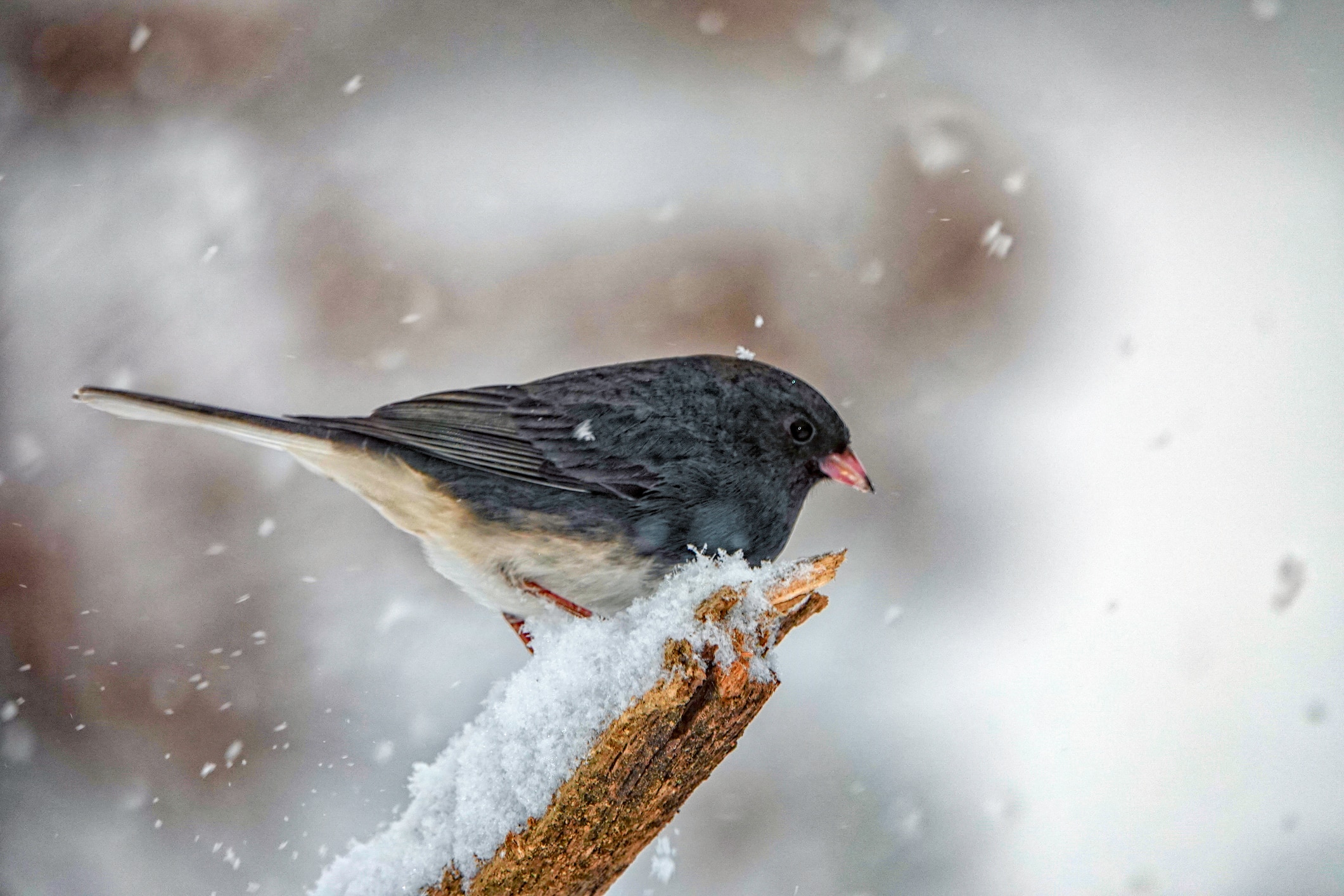
Photo by BDphoto/E+
- Dark-eyed juncos are found throughout most of the U.S. in the winter, except for Florida, the Northeast, the Pacific Northwest, and parts of the Southwest.
- The junco’s’ appearance varies regionally. Generally, different subspecies share a round head, pale-pink beak, and white outer tail feathers.
You’ll typically spot dark-eyed juncos foraging for fallen seeds on the ground, but they might look very different depending on where you live in the U.S. More than a dozen subspecies of these medium-sized sparrows are recognized, with the two most prominent being the Slate-colored variety, which resides in the eastern U.S., and the Oregon subspecies, which is mostly brown with a black hood.
Recommended Products
American Robin
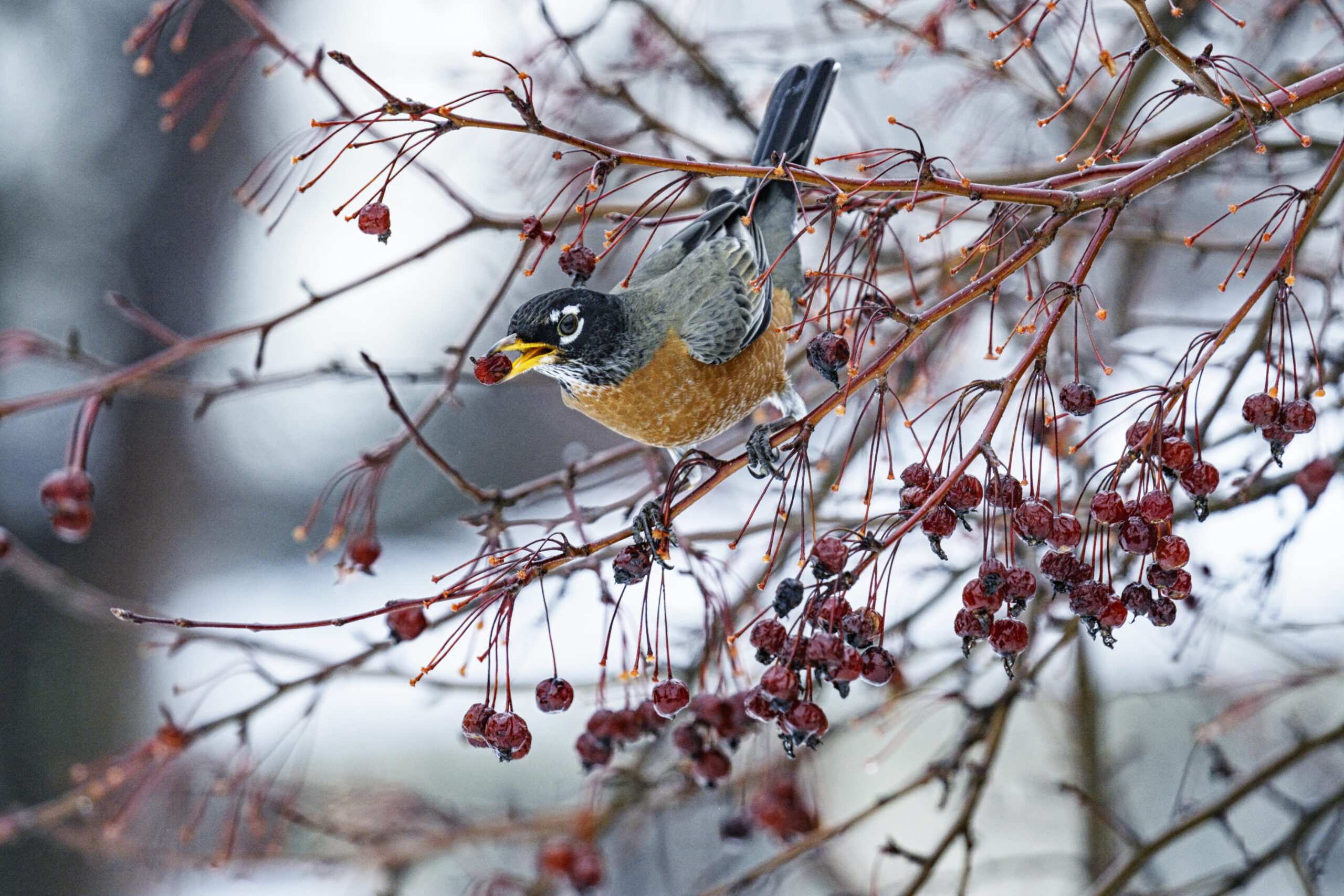
Photo by Willowpix/E+
- American robins are found throughout most of the country year-round, but in winter you’ll also find them in the far south of the U.S., from California to Florida.
- They have black heads, bright-yellow bills, and white eye rings, but their most distinct feature is their rust-colored chest and belly.
American robins forage on the ground for insects, seeds, and berries. In the winter, they fly and roost in flocks. You’ll find them in manicured environments like lawns and gardens, as well as in wild habitats like woodlands and forests.
“They lean forward as they run,” says ornithologist Corina Newsome, also known as Hood Naturalist. “They have a certain look to them when they’re moving.”
Recommended Products
Blue Jay
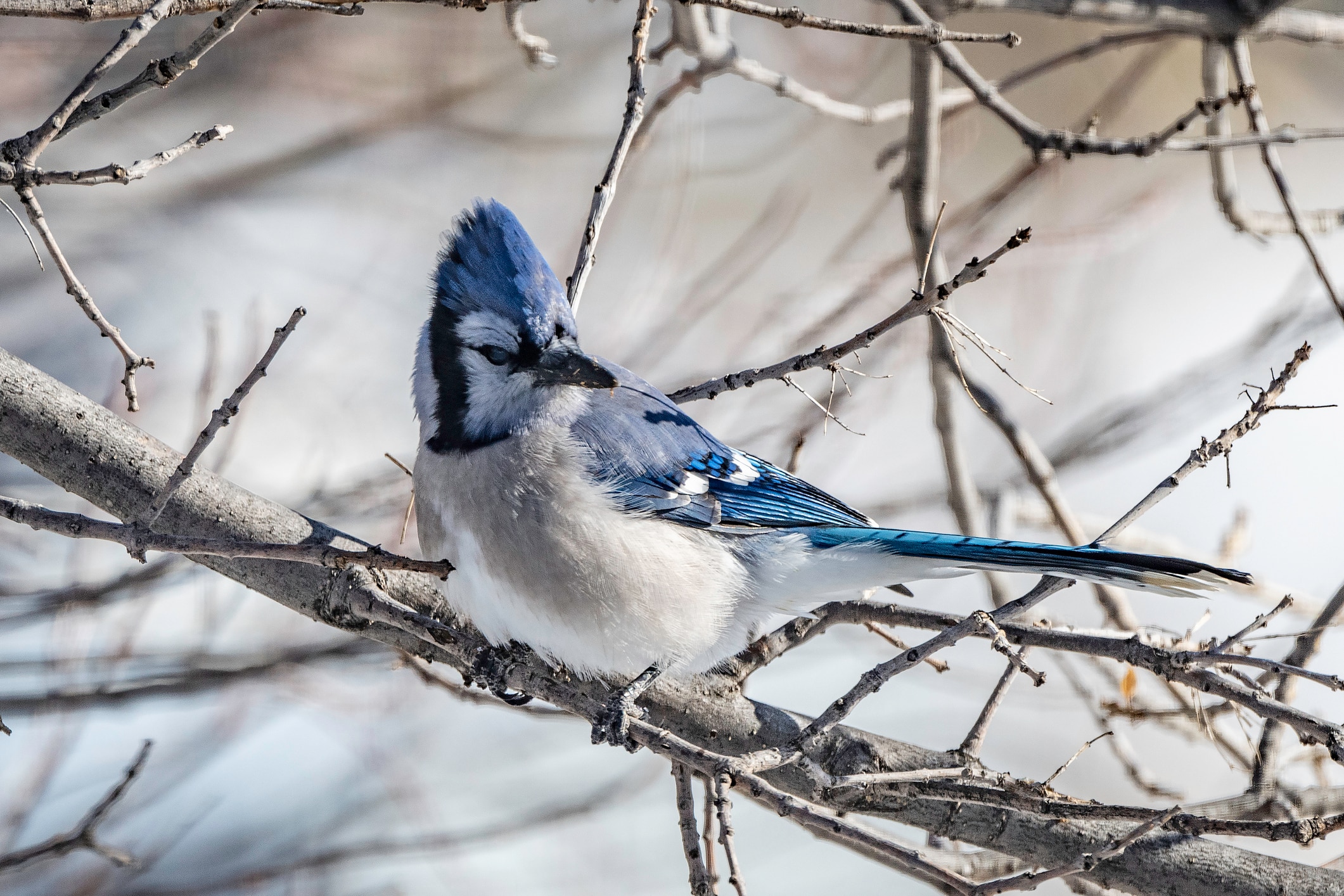
Photo by John Morrison/E+
- Blue jays are found year-round in the eastern and central U.S., and in the Pacific Northwest during the winter.
- They’re relatively large, crested blue birds with white bellies and thick, black beaks.
Blue jays are hard to miss—they’re large blue birds with prominent crests—but you’ll certainly hear them if you don’t spot them first. They’re loud birds who even mimic hawk calls.
They’re resident birds but can be nomadic. They love acorns and nuts, so whether you have an oak tree in your yard or provide food using a bird feeder, they’ll keep coming back for more in the winter.
Recommended Products
Downy Woodpecker
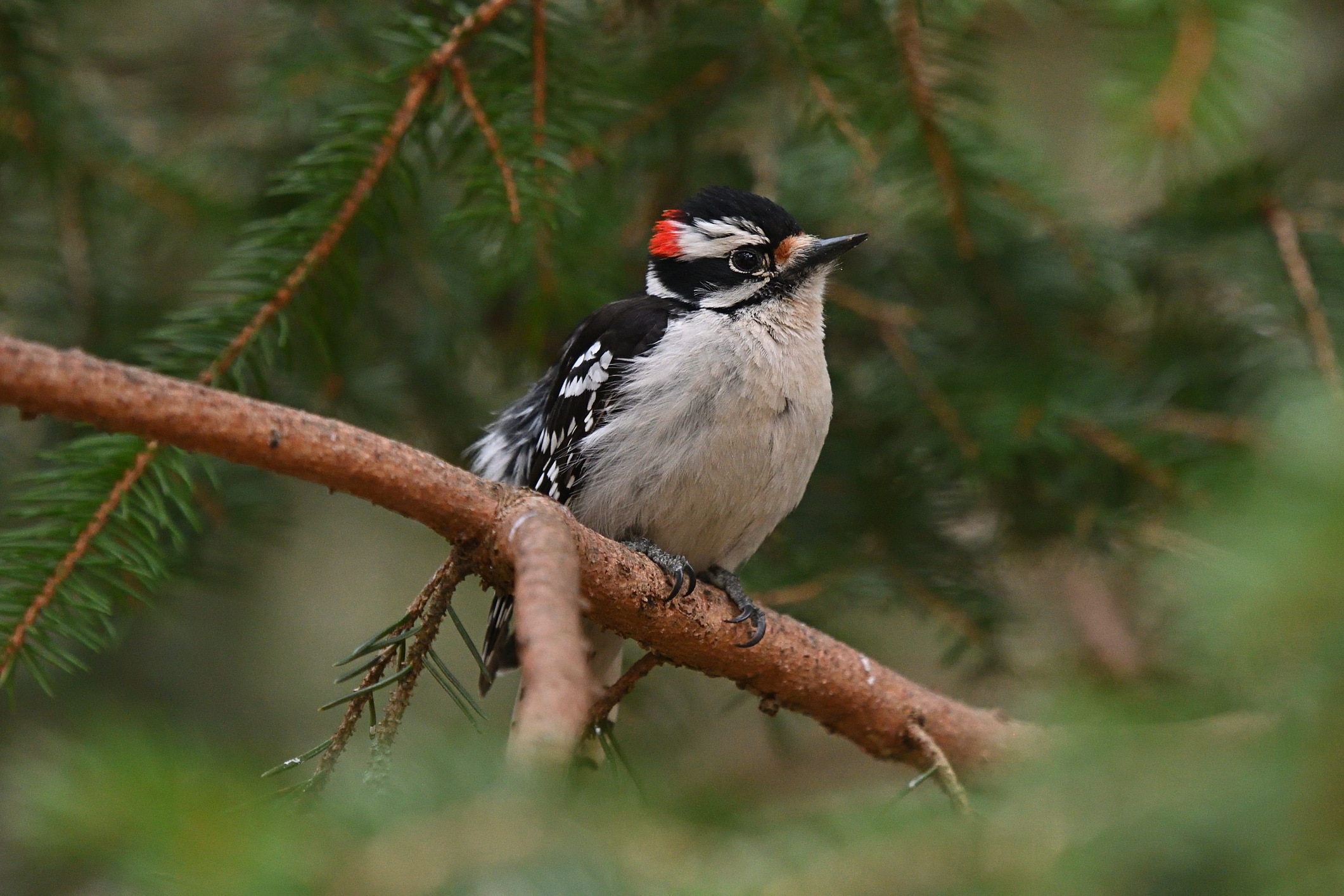
Photo by Robert Winkler/iStock/Getty Images Plus
- Downy woodpeckers are found throughout most of the U.S. year-round, except for western Texas and the far southern parts of California, Arizona, and New Mexico.
- The black-and-white stripes on the downy woodpecker’s head and spots on its wings make it look like a tiny flying zebra. Males also have a small red patch on their heads.
The challenge in identifying a downy woodpecker, says Newsome, is that “pretty much all woodpeckers in the United States are some combination of black, white, and red”—sometimes with some yellow thrown in.
But downies are distinct because of their size: They’re the smallest of the woodpeckers.
Another feature that sets them apart? They cling to the sides of trees as they forage for insects.
Recommended Products
Cedar Waxwing

Photo by Willowpix/E+
- While they’re found in the northern half of the U.S. year-round, some cedar waxwings winter in the southern half of the country.
- The bird’s Zorro mask is its most distinctive feature, but its tall crest, dusty-rose plumage; yellow belly and tail tip; and red wing tips also set it apart.
You’ve got eggnog, and cedar waxwings have berries. These masked birds travel in flocks and they can be seen munching on fermented berries by the dozens during the winter, sometimes resulting in intoxication and unsteadiness.
The fruits can provide a buzz, but they also contribute to the waxy red secretion that the bird’s body processes, and is eventually seen on the birds’ wing tips—or “waxwings.” Get it?
White-breasted Nuthatch
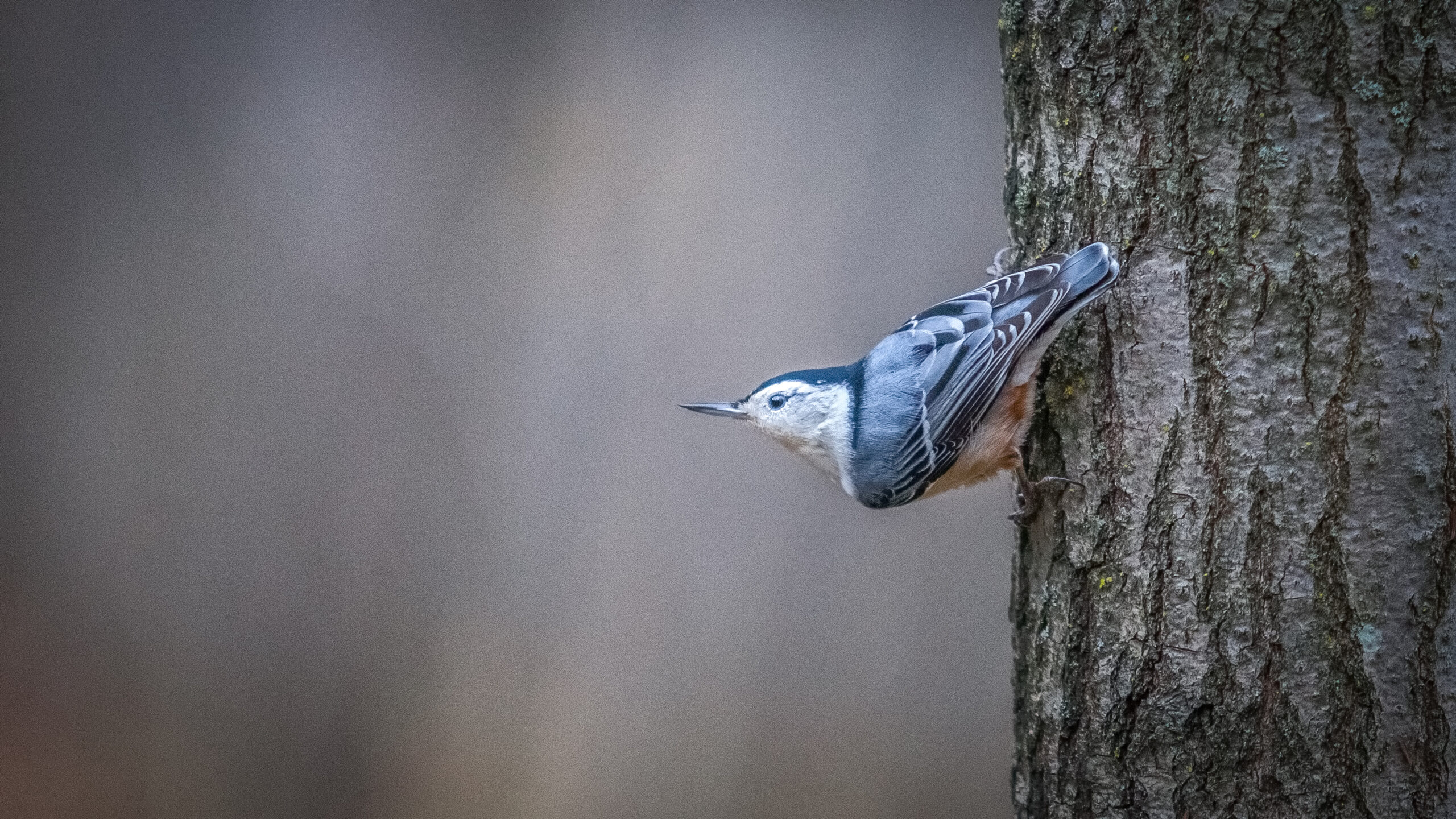
Photo by marcophotos/E+
- The white-breasted nuthatch is found year-round in most of the U.S., save for South Florida, most of the Gulf region, half of Texas, and a patch of the Southwest.
- The blue-gray bird has a black cap, no neck, a white belly, and a rust-colored patch on its lower body, near its legs.
The white-breasted nuthatch is a common feeder bird, and you could be lucky enough to see them walking headfirst down tree trunks.
Newsome describes the species as “acrobatic,” and Bateman agrees: “There aren’t many species that can walk along a branch both ways,” Bateman says.
How to Attract and Help Winter Birds
Set Up Bird Feeders
Winter can be a tough time for birds. Food and water are harder to come by, but they have to keep on as much fat as they can to stay warm. You can help the winter residents in your area by putting up bird feeders.
Recommended Products
Make sure to clean your feeder regularly to curb the spread of avian diseases, and keep them away from windows to avoid strikes. Place them off the ground in an area with some cover to protect feeder birds from predators.
“Cooper’s hawks will go after birds at the feeder,” says Bateman. “If you put it somewhere where the birds feel a little bit safer, they’ll be more likely to use it.”
Feed the Right Food
“Birds require a lot of calories because they need to maintain their body temperature in the cold,” says Bateman. “Providing good-quality, high-calorie food is really important.”
Different species benefit from different food sources. Newsome recommends supplying a mix of:
- Seeds (Bateman suggests Nyjer seed, which requires a special feeder.)
Recommended Products
- Seed-nut mixes
Recommended Product
- Suet (animal fat that can be mixed with other foods birds love)
Recommended Products
Every species has its preferences: Suet is good for woodpeckers; cardinals prefer seeds and nuts; and blue jays love peanuts.
Create a Bird-Friendly Environment
Birds should see your yard as a safe place away from the perils of winter. Planting native plants is one effective way of achieving this. They can serve as food sources for birds and can also provide shelter.
The wilder your yard is, the better, says Bateman. “A lot of people like to clean up their leaves in the fall,” she says, “but it’s actually better to leave it until later in spring, because it provides a foraging habitat for birds.”
If you can’t resist the urge to prune, keep the brush piles. “These are really important places for birds,” she adds. “They like to hide in the winter because there are fewer leaves on the trees, so they need spaces to hide from predators.”
Providing a water source is also essential. Bird baths are one option, but remember to keep up with proper maintenance. In the winter, this can include using a heater or deicer, like K&H Pet Products Ice Eliminator.
Recommended Products
It’s all about keeping water flowing, says Newsome. “If you want to go really high-tech, you can install a little shallow pond or moving water feature,” she adds.
Recommended Product
Winter Bird FAQs
What are some birds called “snowbirds”?
Several species of birds are called “snowbirds,” but perhaps the best example is the dark-eyed junco. These birds breed in Canada and migrate south to most of the U.S. during the winter.
Why are cardinals considered winter birds?
Cardinals do not migrate, so they don’t suddenly appear in your area during the winter. They’ve likely been there all year long, but they’re particularly noticeable during this season, when their bright-red plumage sticks out against a snowy backdrop—especially when perched on a leafless tree.
They also stay put when other species head south for the winter, making them even more prominent during this time of year.
Which bird lives in the coldest climate?
Birds such as penguins have adapted to freezing climates. Snowy owls live in the Arctic, but during migration season they can be seen in the northernmost parts of the U.S.
Is a blue jay a winter bird?
Blue jays are considered nomadic, meaning they move around, but their seasonal movements are not as clearly defined as those for migratory species. They appear to move for resources: They may stay in the same place throughout the year, or move some years but not others.
This means they can be spotted throughout the winter in places that get cold, even when other species head south for the season. Like cardinals, their vivid plumage makes them particularly prominent during winter.

